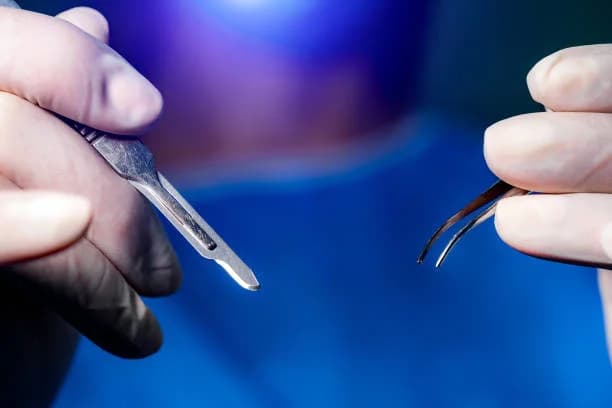When it comes to laser eye surgery, it’s reassuring to know that you have options. If you’re not an ideal candidate for one type of procedure, you might meet the criteria for another. Read on to learn more about the LASIK (laser-assisted in situ keratomileuses) eye surgery procedure vs. the LASEK (laser-assisted epithelial keratomileusis) eye surgery procedure.
What is laser eye surgery?
Before getting into the differences between the two treatments, let’s understand a bit about the concept of laser eye surgery in general. Laser eye surgery refers to the process of reshaping the clear layer of your eye (cornea) with a concentrated beam of light known as a laser. Even though it’s called surgery, there are no incisions involved, and you’re mostly having a laser eye treatment. The two laser eye treatment methods are Lasik and Lasek, with the main difference being how your cornea is opened to allow the laser through.

What is LASIK eye surgery?
LASIK is a commonly performed type of eye surgery, which is done to correct vision in people who are nearsighted, farsighted, or have astigmatism. By reshaping the cornea, the surgery corrects these refractive errors.
During LASIK treatment, the first laser will create a very thin protective flap on the clear layer of your eye (your cornea). This protective flap will then be lifted, and the second laser will then be used to correct your vision. Both eyes are usually treated on the same day.
Lasik eye surgery has a quick recovery and you’ll be able to return to work and drive within 24 hours of the treatment. Most people will notice an immediate improvement in their vision, while others may take a few weeks to see the full result.
What is LASEK eye surgery?
LASEK eye surgery is a type of eye surgery that combines the benefits of two of the most commonly performed eye surgeries: LASIK and photorefractive keratectomy, also known as PRK. Like LASIK, LASEK surgery is used to treat astigmatism, farsightedness, and nearsightedness. LASEK is the better choice for those with a thin cornea or those who have a medical condition that makes laser eye surgery more challenging. Unlike the two lasers used in LASIK, during LASEK eye surgery, only one laser is used to correct your vision.
An alcohol solution is put onto the surface of your eye and an ultra-thin sheet is applied. This alcohol solution loosens the thin layer of cells on your eye’s surface called the epithelium. These cells then stick to the sheet, which is then gently moved to the side of your eye, giving your surgeon access to the layer of your cornea which will be treated by the laser.

What are the pros and cons of each surgery?
Pros of LASIK: LASIK eye surgery offers excellent patient satisfaction, quick procedure, safe & effective treatment, fast results and reduced dependence on glasses or contact lenses.
Cons of LASIK: LASIK eye surgery cons include the cost (1000-2000 USD for both eyes on average in Iran), as well as carrying certain side effects and risks.
It’s important to note that not everyone is a candidate for LASIK. Ideal candidates are 18 years or older, have healthy eyes, a stable vision prescription, ideal corneal thickness, and realistic expectations. Certain conditions such as pregnancy, nursing, thin cornea, underlying health issues, presence of cataracts, previous eye injury or surgery, and certain medications can disqualify a patient from LASIK.
Pros of LASEK: LASEK eye surgery offers reduced risks of dry eye, no flap-related complications, as well as being the right choice for thin corneas.
Cons of LASEK: LASEK eye surgery cons include longer recovery time, more discomfort, as well as temporary blurred vision.
Just like LASIK, not everyone is a candidate for LASEK. Ideal candidates are 18 years or older, have healthy eyes, a stable vision prescription, ideal corneal thickness, and realistic expectations. Certain conditions such as pregnancy, nursing, thin cornea, underlying health issues, presence of cataracts, previous eye injury or surgery, and certain medications can disqualify a patient from LASEK.
How are LASIK eye surgery and LASEK eye surgery similar?
Both LASIK and LASEK eye surgeries, use a laser to cut into and reshape the cornea. This changes the way the eye focuses light on the retina, leading to improved vision without the need for eyeglasses or contact lenses. With both surgeries, time will tell if the procedure was entirely successful or if you’ll need a second surgery. Some might still need glasses in some situations.

What is the difference between LASIK eye surgery and LASEK eye surgery?
The main difference between LASIK and LASEK is in the corneal flap that’s created during the reshaping process. During LASEK eye surgery, the flap is significantly thinner than the one created in LASIK eye surgery. LASEK eye surgery may also lower the risk of developing dry eyes post-surgery and minimize complications related to the deeper LASIK cut. Recovery after LASEK tends to involve more discomfort and more time, your vision may also appear hazier during the first-week post-surgery than with LASIK.
Recovery from LASIK & LASEK eye surgery
Recovery time for LASIK is relatively quick as the process is minimally invasive. Most patients experience recovery within 24 to 48 hours, with lots of patients even going back to work the next day. With LASEK surgery, the recovery process is longer – between 1 and 2 weeks – as the cells that were either moved or removed to access the middle of the cornea must regrow and settle again.
Conclusion
In conclusion, both LASIK and LASEK are laser eye surgeries that can correct vision problems such as myopia (nearsightedness), hyperopia (farsightedness), and astigmatism. They both reshape the cornea with excimer lasers and have high success rates. However, there are key differences to consider. LASIK is considered less invasive and has a quicker recovery time, making it an easier surgery than LASEK. People with thin corneas, who may not be good candidates for LASIK, are generally considered for LASEK. Both procedures can be done in one day, but LASIK may be quicker due to its less invasive nature. Post-operative care also differs, with LASIK generally having a quicker recovery time. Lastly, insurance typically does not cover either procedure, so it’s important to check with your provider. Therefore, the choice between LASIK and LASEK should be made in consultation with an eye doctor, considering your specific circumstances and needs.
Read more: